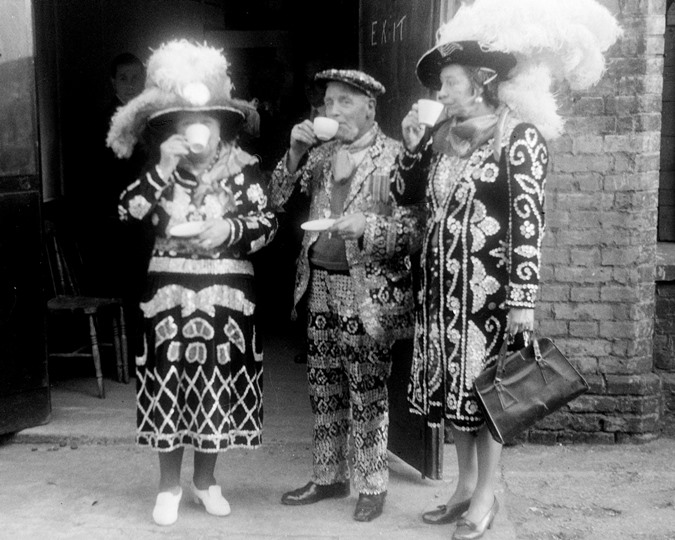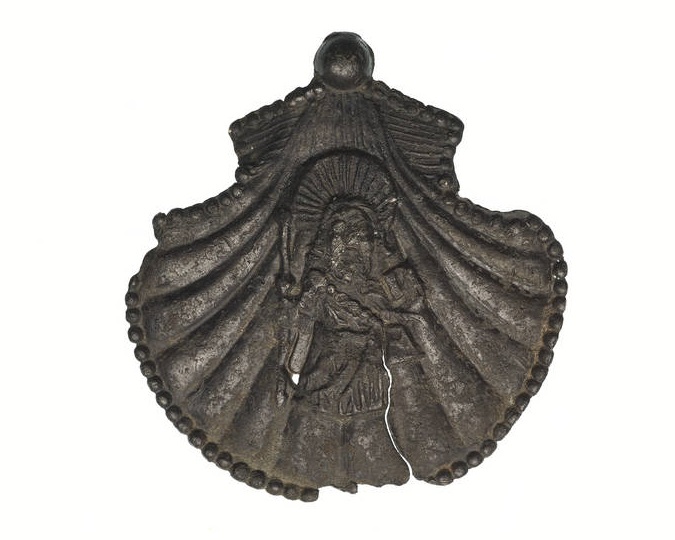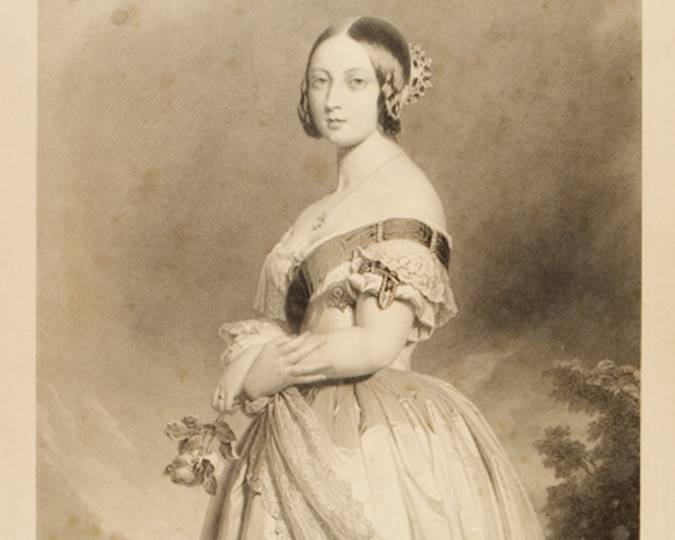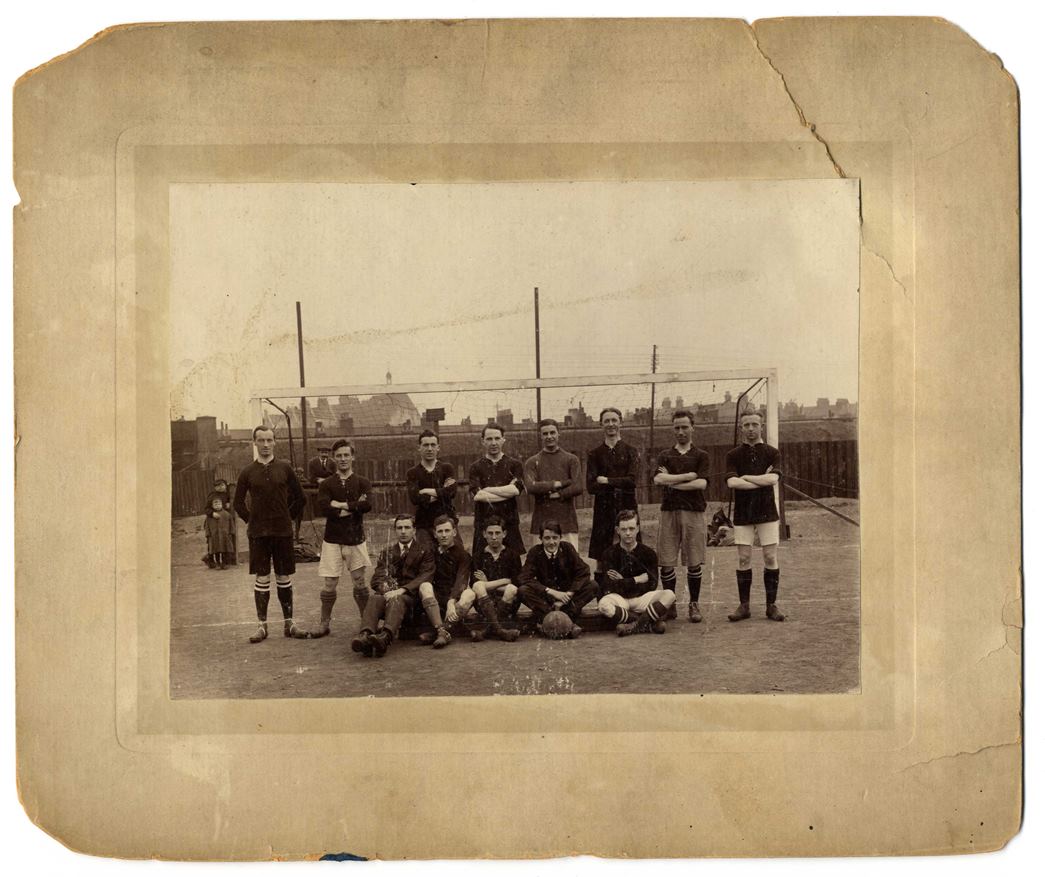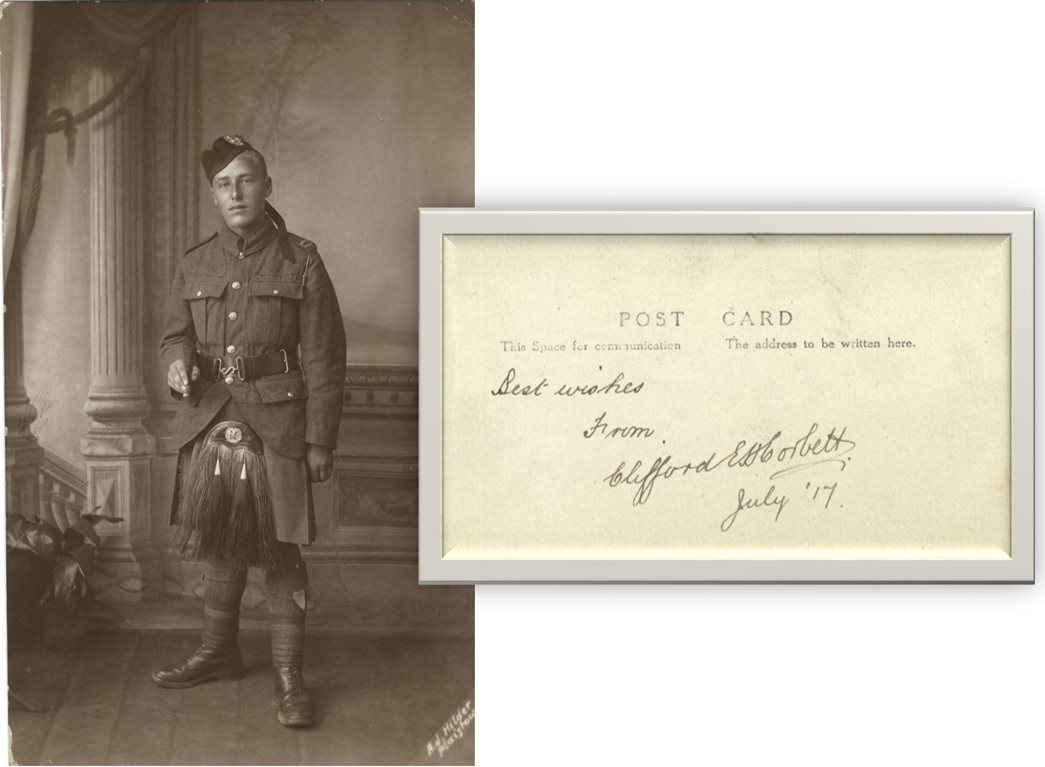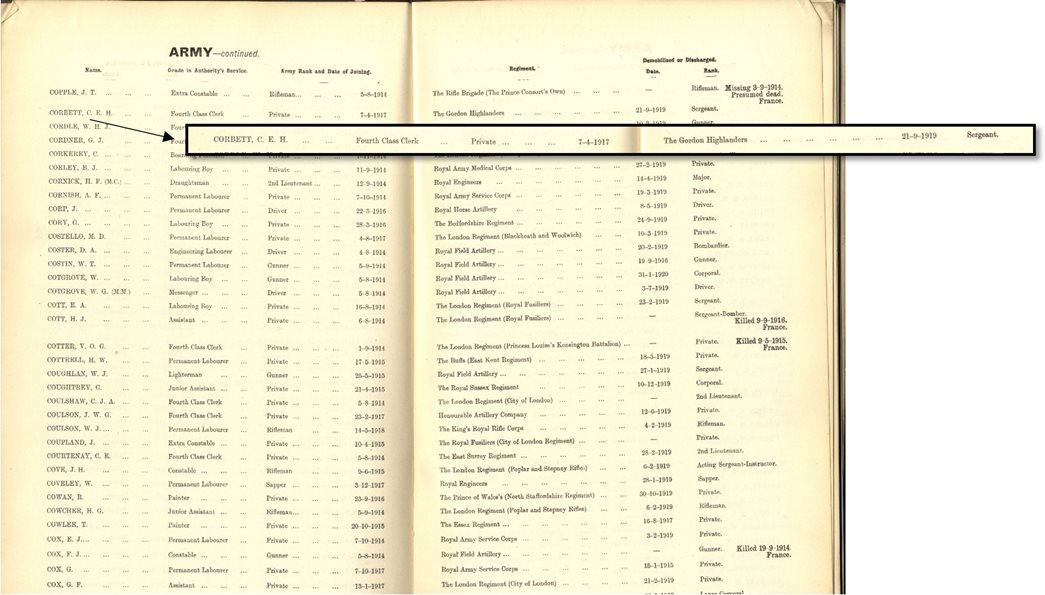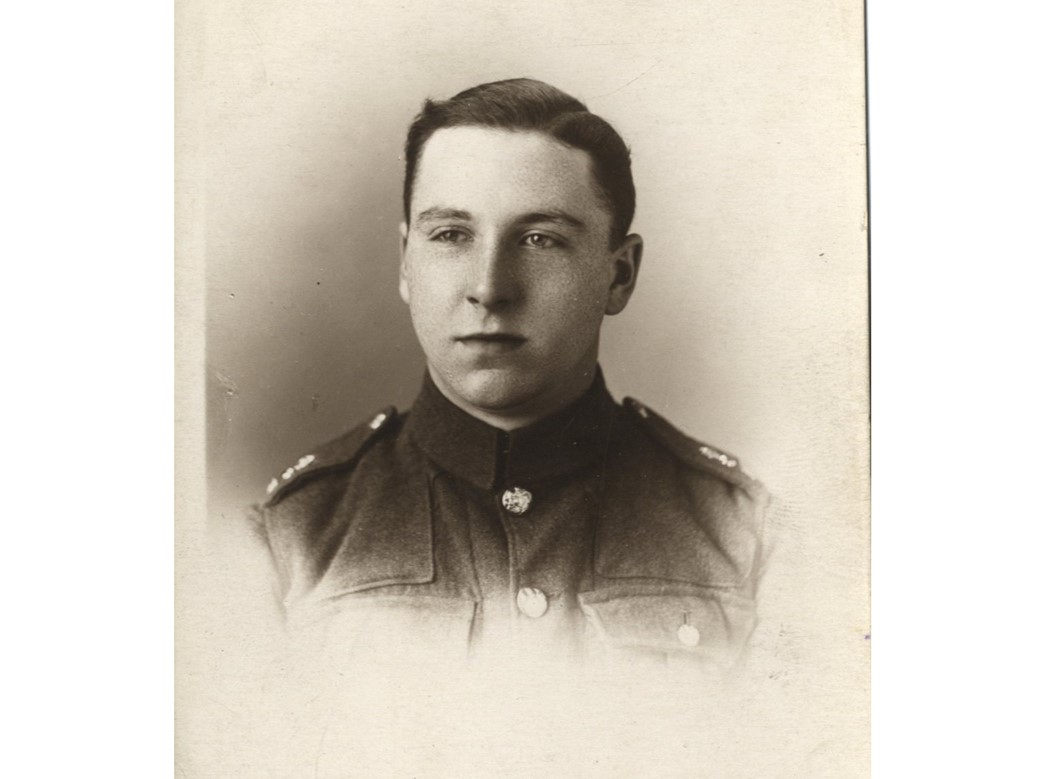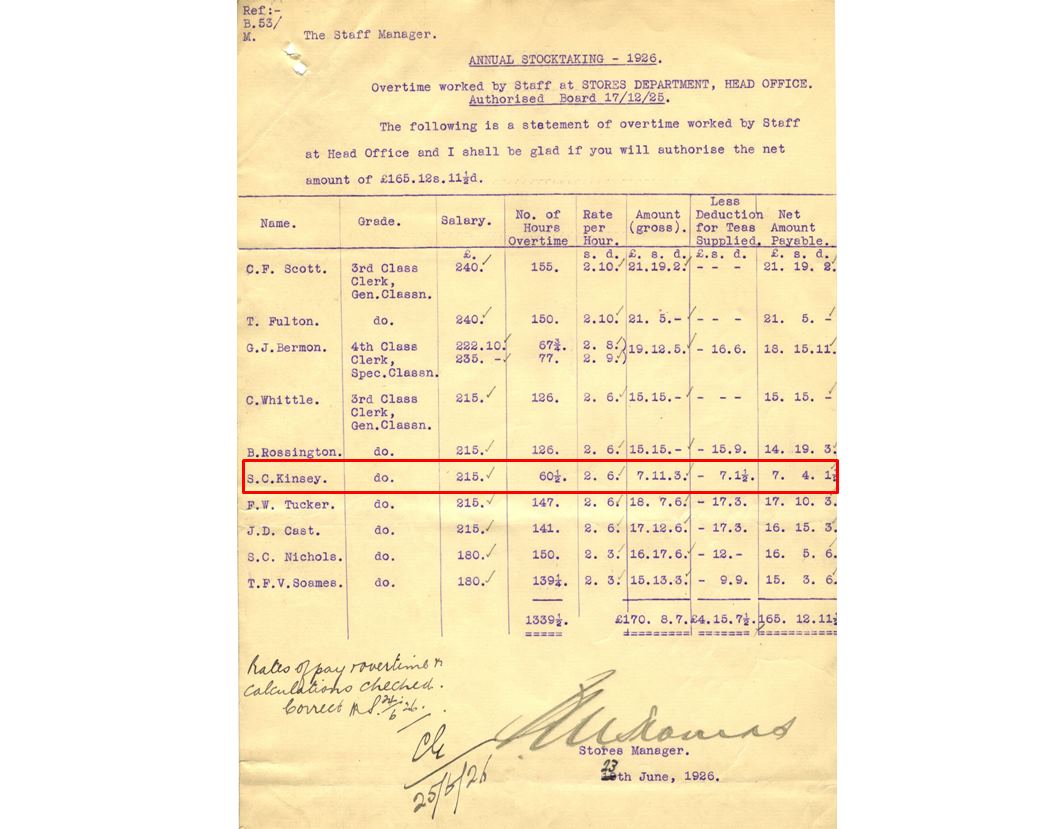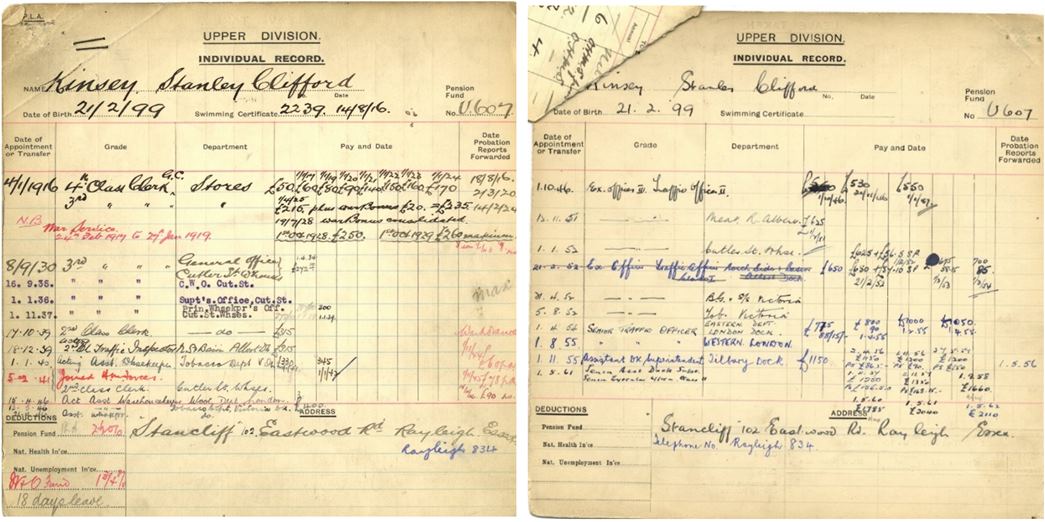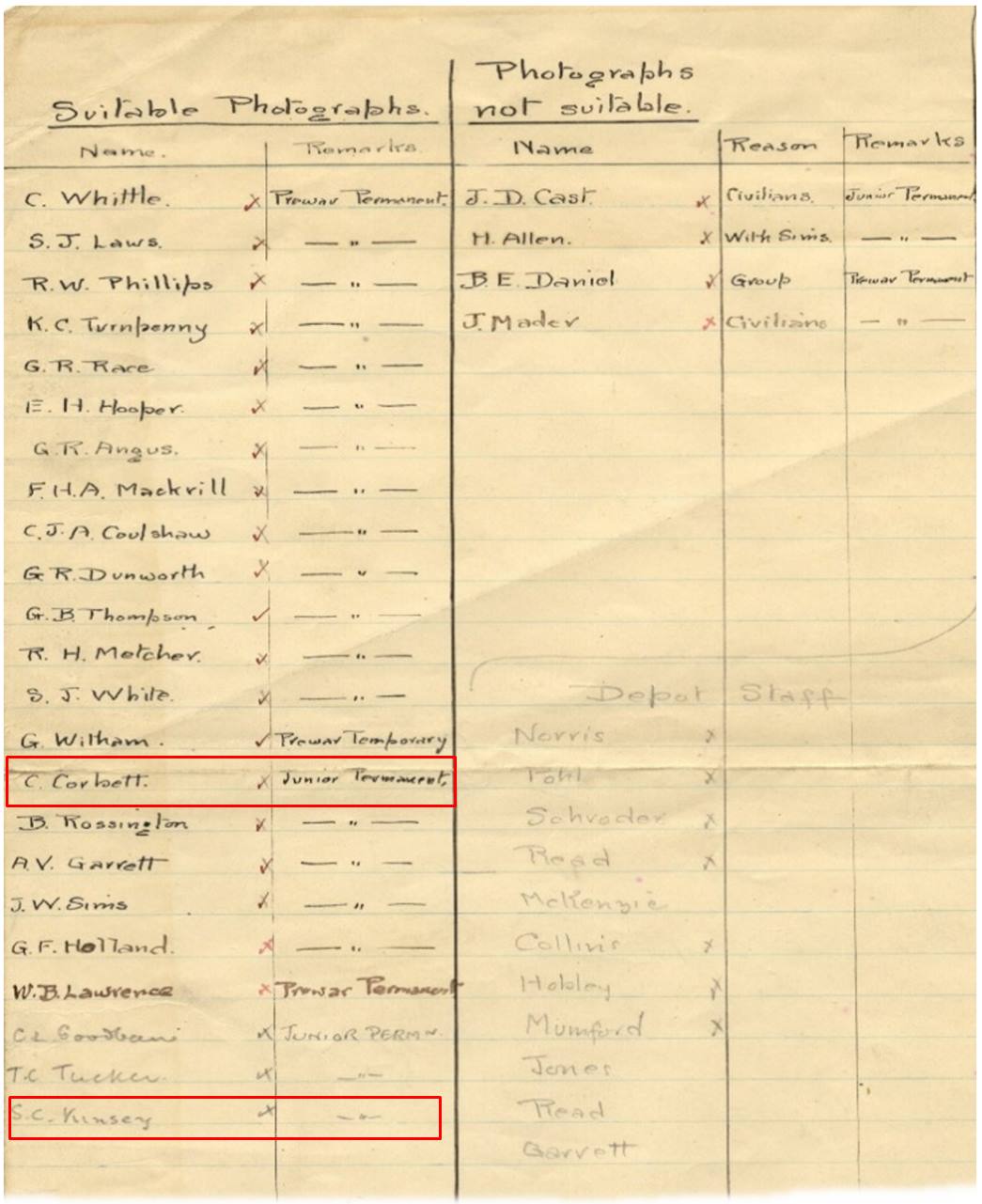How cataloguing the Port of London Authority Archive led to unearthing fascinating connections to WWI.
In a business archive, it’s common to be inundated by memos, correspondence and order forms. So, when we discover photographs of staff members — pictured not in an office setting, but wearing WWI uniform or part of a football team — it really piques our interest!
The museum’s Port and River Archive houses the Port of London Authority (PLA) Archive, which consists of more than 50,000 plans, over 5,000 boxes of files and at least 40,000 historic photographs. As part of an ongoing cataloguing project, as an Archive Cataloguer, I have been cataloguing, arranging and repackaging PLA department records, making them more accessible for researchers. Unlike museum objects, records are catalogued, ideally, maintaining their original order to retain their context.
While cataloguing the records of the PLA Stores Department — also known as Stores and Supplies Department — I found these fascinating photographs. The department, which ordered, supplied and took care of goods such as ropes, hooks and tarpaulin, was the oldest PLA department at its closure in 1982. It was created in 1909, at the same time as the formation of the PLA.
These photographs featured department personnel involved in staff football clubs, photographs of department dinner parties and, interestingly, photographs of the Stores Department staff members who served in the First World War in their uniforms. These photographs stood out amid records about the PLA’s daily operations and business decisions. Most of the photos within the PLA Archive are of the docklands, machinery, vessels, buildings and goods as well as of some visits of notable people to the Port of London — not of individual staff members. These photographs of PLA personnel, thus, provide a rare — albeit limited — insight into the lives of individual Stores Department staff members.
Tracing their life story
Intrigued by these photographs of PLA personnel in uniform, I searched through the boxes and filing cabinets to decipher who the people were; what role they held in the Stores Department prior to their time in the armed forces; and, if possible, their careers in the PLA after the First World War. I also wanted to find out how the photographs came into the department’s possession.
These photographs are remarkable, some even have the names of those pictured handwritten on the reverse. Using other existing records, I identified 22 Stores Department staff members, their role in the PLA before enlisting, when they joined the military, and whether they served in the Army, Navy or Air Force during the First World War. Unfortunately, some of them were killed in service, so there is no record of them thereafter.
Of the 22, there were two staff members about whom I was able to find out more using other records in the PLA Archive.
Clifford E.H. Corbett was a Fourth Class Clerk in the Stores Department when he joined the armed forces. A Fourth Class Clerk was the lowest grade of clerk and they would help with administrative tasks. During WWI, Corbett served in the Army as a Private and later a Sergeant in The Gordon Highlanders.
The Gordon Highlanders were line infantry, and had regular Army and Territorial Army within its regiment. The PLA Staff Record shows that Corbett served from April 1917 until September 1919.
After his war service, Corbett continued working for the PLA in the Stores Department. Corbett is pictured in a 1933 photograph of the Stores Departmental taken in front of the PLA’s Trinity Square Headquarters, where the department was based, illustrating that some PLA personnel returned to their pre-war professions.
A lifetime in service
Stanley Clifford Kinsey was another Stores Department staff member, who I was able to trace through the archive. Kinsey joined the PLA in January 1916, aged 16 years and 11 months, as a Junior Permanent, Fourth Class Clerk in the Stores Department. On 24 February 1917, Kinsey began his war service.
During World War I, Kinsey served in the British Army as a driver and later as a Private in the Royal Horse Artillery from 1917 to 1919. The Royal Horse Artillery, founded in 1793 and still in existence today, served as mobile units during WWI, supporting the Royal Field Artillery and cavalry with horse-drawn guns.
So, what happened to Kinsey after the war?
Records highlight that upon his return to the PLA in 1919, Kinsey continued to work as a Fourth Class Clerk in the Stores Department and was later promoted. He is listed in 1926 as a Third Class Clerk undertaking overtime during annual stocktaking for the Stores Department and was paid £7 4s and 1.5d for the overtime he performed. The records also indicate that Kinsey served in World War II as well, and later resumed his job at the PLA after his service.
From 1916, when he joined the PLA, until his retirement in 1962, Kinsey worked all across the Port of London — at the PLA Head Office, at Cutler Street Warehouse, at the Tobacco Department, Royal Victoria Dock, at London and St Katharine Docks, and at Royal Albert Dock, before finally retiring from service at Tilbury Docks.
During his 46-year employment, Kinsey climbed the ranks. At his retirement in June 1962, Kinsey was a Senior Assistant Dock Superintendent at Tilbury Docks, a managerial role that would have included overseeing the daily running of Tilbury, ensuring all operations were running smoothly and helping to resolve any issues that may have arisen. A large increase in role, responsibility and wage for a 16-year-old Fourth Class Clerk who’d joined the PLA in 1916!
So how did these photographs end up in the PLA Archive?
A place of pride
While cataloguing the records of the Stores Department, I discovered a handwritten record listing the department’s staff members who had served in WWI, and whether they had sent a photograph to the department. It became apparent that the Stores Department had requested a photograph from each of their staff members serving in the war and made a concerted effort to ensure the department had a photograph. It is not known if the individual sent in the photographs, or were they sent by their families or friends.
The Stores Department may have had the photographs of its personnel who had served in the war on display in the offices as a matter of pride, as I found other photographs and drawings that were on display in the same box. These photos and other records demonstrate the fascinating wealth of information the PLA Archive holds. While cataloguing these records, we realise their importance from not only an organisation’s point of view, but we also get a chance to unearth the individual stories that make up history. In this case, it was figuring out the life stories of some of the PLA personnel during and after the Great War, and how, for some, their careers resumed upon their return to the PLA. While we don’t know how these men fared while serving in the military — that’s research for another archive — such information is also indicative of how useful business archives can be for family historians.

